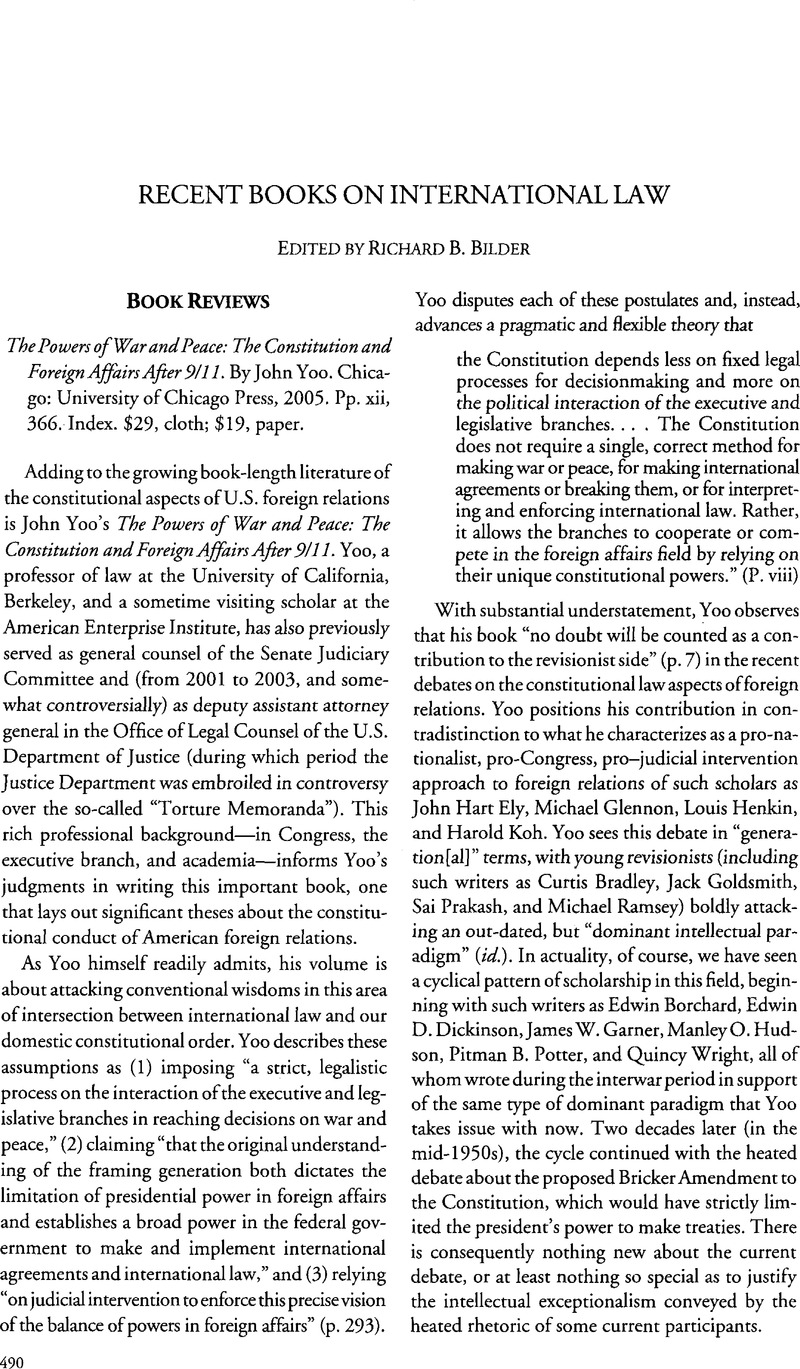Article contents
The Powers of War and Peace: The Constitution and Foreign Affairs After 9/11. By John Yoo. Chicago: University of Chicago Press, 2005. Pp. xii, 366. Index. $29, cloth; $19, paper.
Published online by Cambridge University Press: 27 February 2017
Abstract

- Type
- Recent Books on International Law
- Information
- Copyright
- Copyright © American Society of International Law 2006
References
1 For more on this distinction, see H. Powell, Jefferson, The Original Understanding of Original Intent, 98 Harv. L. Rev. 885 (1985)Google Scholar; Vasan Kesavan & Michael Paulsen, Stokes, The Interpretive Force of the Constitution’s Secret Drafting History, 91 Geo. L.J. 1113 (2003)Google Scholar.
2 S. Exec. Rep. NO. 91-9, at 5 (1969) (appendix; statement by J. Edward Lyerly, deputy legal adviser for administration, U.S. Department of State).
3 The question is whether treaties (advised and consented to by two-thirds of the Senate) can be used completely interchangeably with Congressional-Executive Agreements (adopted as ordinary legislation) to implement U.S. international obligations. This debate was framed in such articles as Myres, S. McDougal & Lans, Asher, Treaties and Congressional-Executive or Presidential Agreements: Interchangeable Instruments of National Policy, 54 Yale L.J. 181 (1945)Google Scholar; Ackerman, Bruce & Golove, David, Is NAFTA Constitutional? 108 Harv. L. REV. 799 (1995)Google Scholar; Laurence, H. Tribe, Taking Text and Structure Seriously: Reflections on Free-Form Method in Constitutional Interpretation, 108 Harv. L. Rev. 1221 (1995)Google Scholar.
- 2
- Cited by


